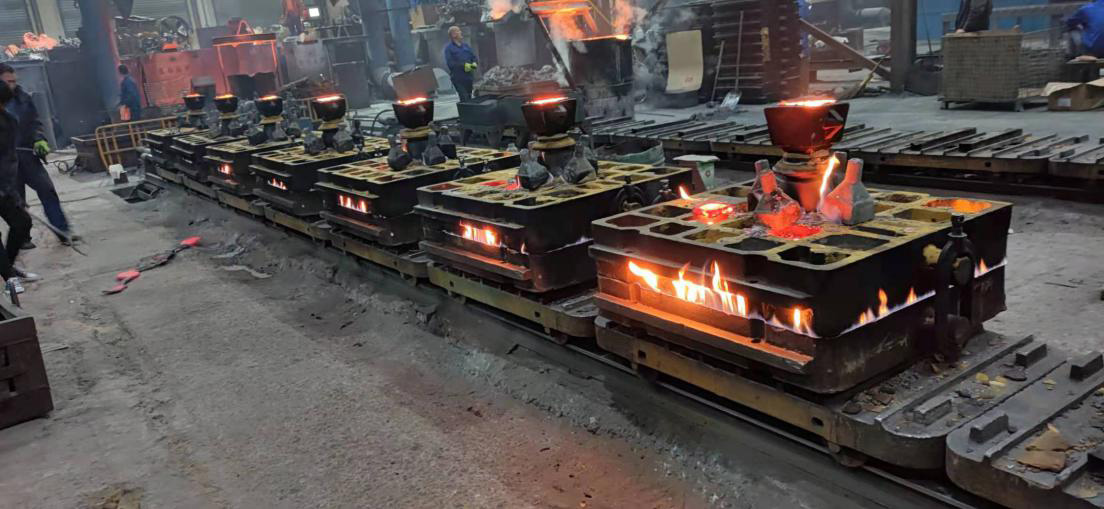The Role of Sand in Sand Casting Types, Characteristics, and Advances
Sand casting, one of the oldest and most versatile metal casting processes, relies heavily on the quality and characteristics of the sand used. This method, which dates back thousands of years, involves creating a mold from sand to produce metal parts. Understanding the types of sand used in sand casting, their properties, and recent advancements can provide valuable insights into the efficiency and effectiveness of this traditional manufacturing technique.
Types of Sand Used in Sand Casting
The most commonly used type of sand for sand casting is silica sand, composed primarily of silicon dioxide (SiO₂). Its popularity is attributed to its availability, high melting point, and excellent thermal stability. Silica sand can withstand high temperatures, making it suitable for various metal casting processes. Furthermore, it can be easily molded and compacted, allowing for intricate designs.
In addition to silica sand, other sand types may be used depending on the specific requirements of the casting project. For instance, olivine sand, composed of magnesium iron silicate, offers superior thermal conductivity and resistance to thermal expansion. This characteristic makes it an excellent choice for casting high-temperature alloys. However, olivine sand is more expensive, which may limit its use in certain projects.
Another option is zircon sand, known for its high refractoriness and low thermal expansion. Its ability to resist chemical reactions with molten metals makes zircon sand ideal for casting reactive metals like titanium. However, the cost of zircon sand is significantly higher than that of silica sand, leading to limited applications in cost-sensitive projects.
Characteristics of Quality Casting Sand
The characteristics of sand used in sand casting play a crucial role in determining the quality of the final product. Key properties include grain size, shape, and distribution, as these factors directly affect the sand's ability to form molds. Fine-grained sand can produce smoother surface finishes, while coarser grains might offer greater strength and durability.
sand used for sand casting

Moreover, the bonding properties of the sand are critical for maintaining mold integrity. Typically, a binder is added to the sand to help it hold its shape during the casting process. Common binders include clay and organic materials, which enhance the sand's cohesiveness and improve its ability to retain the desired form under the weight of pouring molten metal.
Another important aspect is the moisture content of the sand. Properly balanced moisture levels can significantly impact mold strength and collapse resistance, ensuring that the casting process runs smoothly without defects.
Advances in Sand Casting
In recent years, advancements in sand casting technology have led to improved processes and results. Innovations such as computer-aided design (CAD) and computer-aided manufacturing (CAM) have allowed for greater precision and control in creating molds. This has led to reduced waste and enhanced production efficiency.
Furthermore, the development of synthetic sands has gained traction. Synthetic sands can be engineered to meet specific casting needs, offering advantages such as improved consistency and reduced environmental impact. Compared to traditional sands, synthetic options can minimize defects and provide better surface finishes due to their uniform composition.
Additionally, advancements in 3D printing technology have transformed the sand casting landscape. 3D printing allows for the rapid production of complex mold designs that would be difficult to achieve with conventional methods. This technology also reduces lead times and costs, making sand casting more competitive in the manufacturing sector.
Conclusion
Sand casting remains a fundamental process in metal manufacturing, with the type and quality of sand significantly impacting the final product. As the industry evolves, embracing advancements in materials and technologies will enhance the capabilities of sand casting, ensuring its relevance in today’s complex manufacturing landscape. Understanding the characteristics of different sands and their applications can aid manufacturers in achieving optimal results, fostering innovation while respecting this time-honored technique.
Post time:Dec . 18, 2024 11:35
Next:The Evolution and Development of Sand Casting Techniques Throughout History
